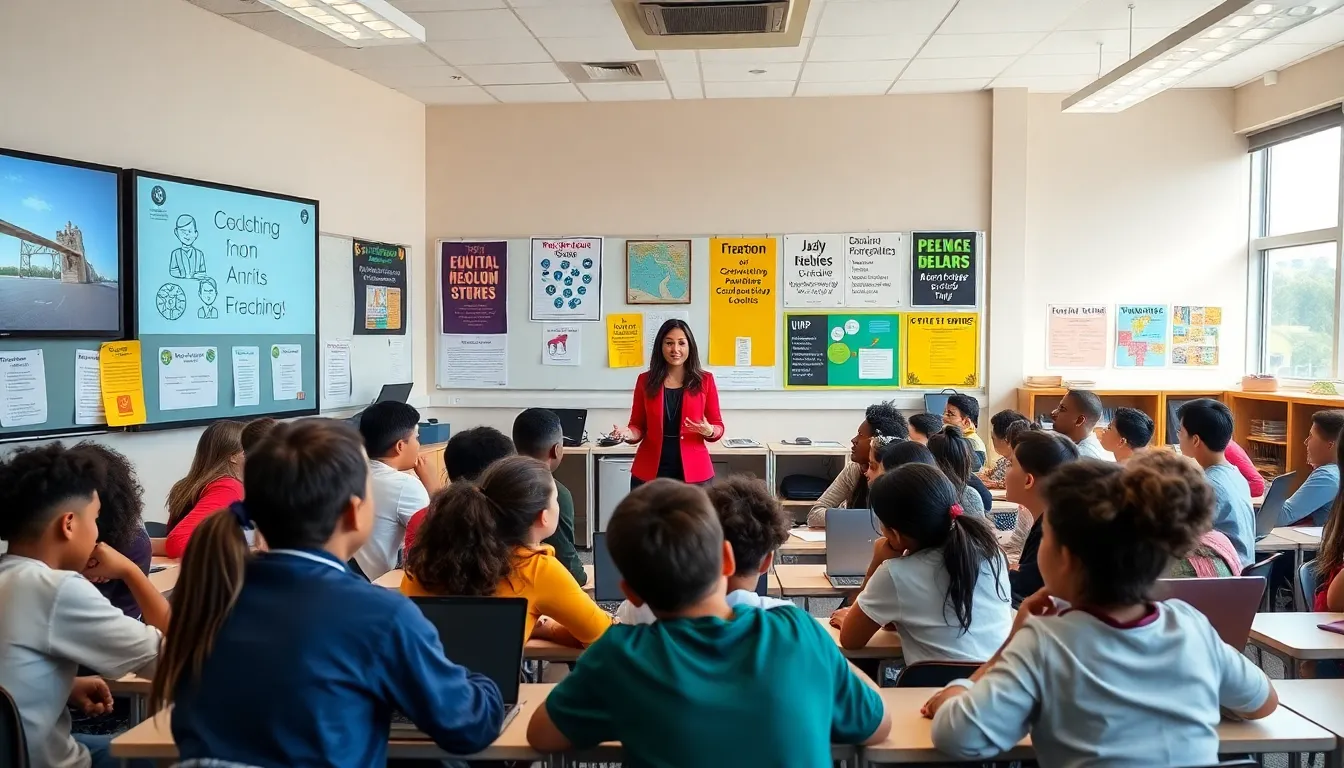Table of Contents
ToggleIn a world where unicorns and flying cars are not just kids’ daydreams, K-12 education often feels more like a reality show gone wrong than a structured path to success. From equity issues that would make any idealist weep to the teacher shortages that have become as common as a pop quiz on a Friday, the landscape of education is a rollercoaster ride of challenges. Buckle up, because we’re diving into the gnarly world of current issues in K-12 education today. Trust us, this is one journey you’ll want to stay informed about.
Equity And Access In Education

Equity in education isn’t just a buzzword: it’s essential for ensuring that every child has an equal opportunity to succeed. Sadly, that’s not the reality in many districts across the country. Social, economic, and geographic disparities contribute to unequal educational access, often leading to a lack of resources for students in underfunded areas.
In some districts, students might attend schools where supplies are limited to outdated textbooks and broken chairs. Meanwhile, just a few miles away, other children enjoy state-of-the-art technology and modern facilities. This disparity raises questions about justice in education, as children from marginalized communities disproportionately bear the brunt.
The education community is pushing for reforms, aiming to bridge these gaps. Programs promoting equitable funding and equal access to advanced coursework are at the forefront. These initiatives highlight the need for policy changes that prioritize success for all students, irrespective of their background.
Impact Of Technology On Learning
The impact of technology on learning is a double-edged sword. On one hand, digital tools have revolutionized the way students engage with information, making learning interactive and accessible. On the other hand, the digital divide has raised eyebrows among educators and policymakers alike. While some students jump into a world of e-books and online resources, others are left struggling with limited access to technology.
During the pandemic, many schools transitioned to online learning. This shift provided a glimpse into the potential benefits of technology in education, such as personalized learning experiences. But, it also spotlighted the stark reality of those without reliable internet or devices, emphasizing the critical need for infrastructure investment.
What comes next? Integrating technology with a focus on inclusivity could be the golden ticket. The challenge lies in ensuring that all students have the tools needed to thrive in an increasingly digital world.
Mental Health And Student Well-Being
Mental health is no longer a topic best left unspoken in K-12 education. Students are facing immense pressures, whether from academic expectations, social media, or family dynamics. As a result, mental health issues among students have surged, creating an urgent need for comprehensive support systems within schools.
Initiatives to incorporate mental health resources have made their way into many curriculums, with programs aiming to foster emotional awareness and resilience. Schools are increasingly prioritizing counseling services, mindfulness programs, and social-emotional learning. But, implementing these resources can still be a challenge due to funding constraints and the stigma surrounding mental health.
To effectively support students, schools must embrace a holistic approach, acknowledging that well-being is just as crucial as academic achievement.
Teacher Shortages And Retention
Teacher shortages have become a pressing issue, leading to larger class sizes and a decline in personalized attention for students. Many educators are leaving the profession due to burnout, low pay, and a lack of support, creating a cycle that can be hard to break. The quality of education that students receive largely depends on the dedication and expertise of their teachers.
To counteract this trend, some districts are investing in teacher training and mentorship programs, emphasizing the importance of job satisfaction and professional growth. Besides, advocating for better pay and benefits is crucial to retaining these professionals who are instrumental in shaping future generations.
Creating an environment where teachers feel valued can dramatically impact retention rates and improve overall student outcomes.
Curriculum Relevance And Standardization
Curriculum relevance remains a contentious topic among educators, policymakers, and parents. As the world evolves, so too should the curriculums that guide our students. Many argue that standardized testing limits creativity and fails to accommodate diverse learning styles. The push for curricula that prioritize critical thinking and real-world skills is growing, as stakeholders recognize the importance of equipping students for life beyond the classroom.
With initiatives aimed at incorporating project-based learning and interdisciplinary studies, there’s hope for more engaging and relevant education. Balancing standardized education with flexible and applicable learning experiences remains a challenge but is vital for preparing students for future challenges.
Changes In Policy And Funding
Changes in education policy and funding have a direct impact on K-12 schools, influencing everything from class sizes to resource availability. Budget cuts can lead to program eliminations, while shifting policy focus can redefine educational priorities. The funding formulas that govern how money is allocated can exacerbate inequalities, especially in under-resourced areas. Advocacy for equitable funding has become essential, as educators and community leaders push for change that ensures every child receives a quality education.
Reform efforts often involve collaboration between local governments, school boards, and education advocates, highlighting the importance of community engagement in shaping policy.
The Role Of Parents And Community Engagement
Parents and community members play a crucial role in K-12 education, acting as partners in the educational process. Increased community engagement can enhance student achievement, creating a collective effort that fosters academic success. Schools that prioritize open communication with parents often see higher levels of involvement, leading to a more supportive atmosphere for students.
Programs and initiatives that encourage parental participation can include workshops, volunteering opportunities, and collaborative projects. By building strong connections between schools and the community, stakeholders can promote a culture of appreciation and support for education.




